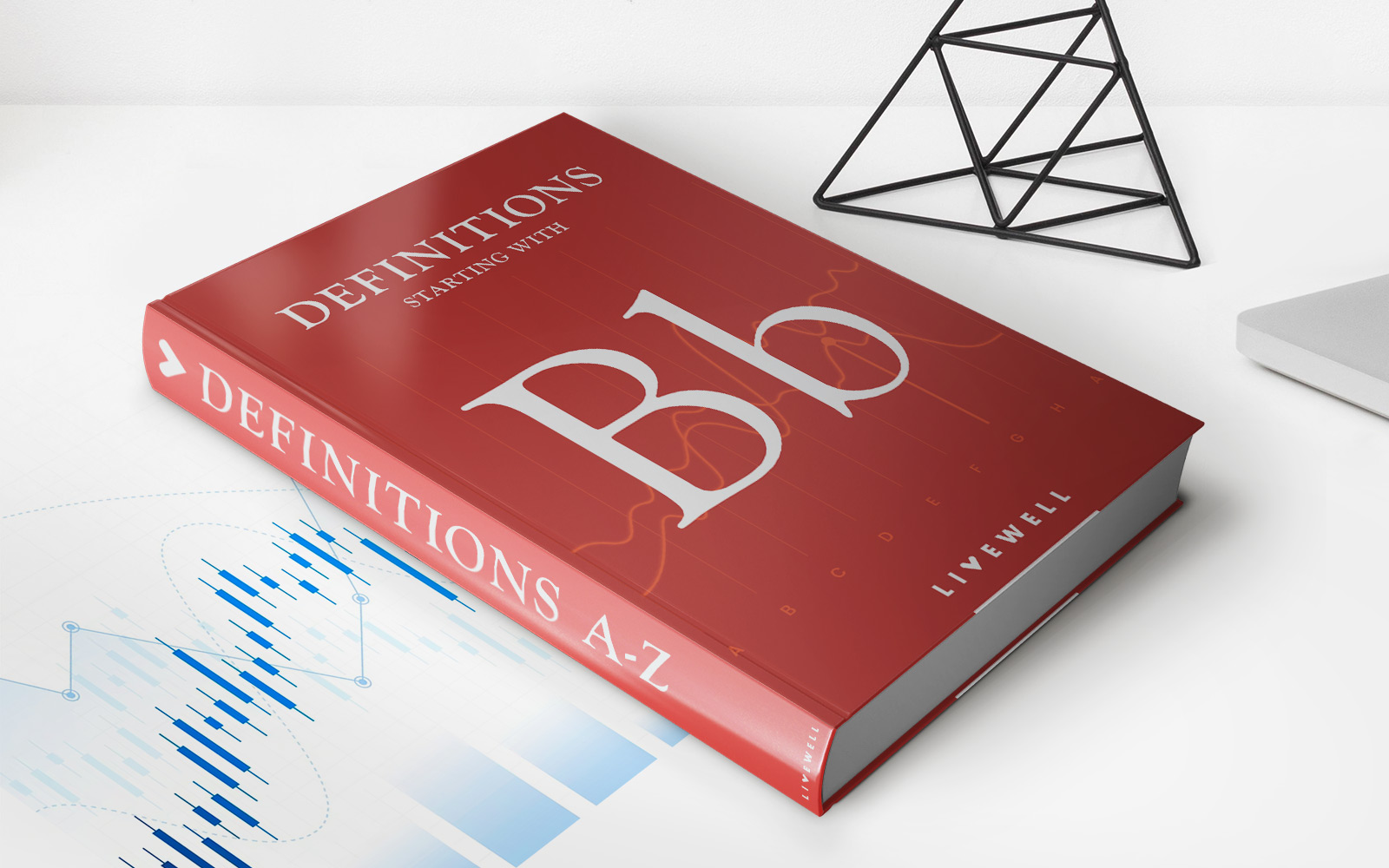

Finance
How To Pay Off Student Loans While In School
Published: January 19, 2024
Looking for ways to pay off your student loans while still in school? Our finance experts share top tips to help you manage your finances and get ahead on loan repayments
(Many of the links in this article redirect to a specific reviewed product. Your purchase of these products through affiliate links helps to generate commission for LiveWell, at no extra cost. Learn more)
Table of Contents
- Introduction
- Understanding Student Loans
- Types of Student Loans
- Importance of Paying Off Student Loans Early
- Strategies for Paying Off Student Loans While in School
- Option 1: Make Interest-Only Payments
- Option 2: Start Making Principal Payments
- Option 3: Find Part-Time Work or Side Hustle
- Option 4: Create a Budget and Cut Expenses
- Option 5: Apply for Scholarships and Grants
- Option 6: Utilize Loan Repayment Assistance Programs
- Option 7: Seek Employer Assistance
- Option 8: Consider Loan Forgiveness Programs
- Frequently Asked Questions
- Conclusion
Introduction
Student loans have become a common burden for many individuals pursuing higher education. While student loans provide the financial means necessary to afford a college education, they can also create long-term financial stress if not managed properly. Paying off student loans while still in school may seem daunting, but it can greatly alleviate the financial burden and set you on a path to financial freedom.
In this article, we will explore various strategies to help you pay off your student loans while still in school. By implementing these strategies, you can start making progress on your loan payments and reduce the overall debt burden.
It is important to understand the different types of student loans, their terms, and the impact they can have on your financial future. We will discuss the importance of paying off student loans early and the potential benefits it can bring.
Furthermore, we will delve into practical strategies that can help you pay off your student loans while in school. These strategies include making interest-only payments, starting to make principal payments, finding part-time work or a side hustle, creating a budget and cutting expenses, applying for scholarships and grants, utilizing loan repayment assistance programs, seeking employer assistance, and considering loan forgiveness programs.
By exploring these options and finding the right combination that suits your circumstances, you can take control of your student loan debt and pave the way for a brighter financial future. Let’s get started on your journey to becoming debt-free while still in school!
Understanding Student Loans
Before diving into strategies for paying off student loans while in school, it is important to have a clear understanding of what student loans are and how they work.
Student loans are a type of financial aid designed to help students cover the cost of their education. These loans can come from the federal government, private lenders, or a combination of both. When you take out a student loan, you are borrowing money that must be repaid over a specified period of time, typically with interest.
There are two main types of student loans: federal loans and private loans. Federal loans are offered by the government and often have more flexible repayment terms and lower interest rates compared to private loans. Private loans, on the other hand, are provided by banks, credit unions, or other financial institutions and may have higher interest rates and stricter repayment options.
When you take out a student loan, you will typically have a grace period after you graduate, leave school, or drop below half-time enrollment before you are required to start making payments. This grace period allows you some time to find a job and get financially settled before you begin repaying your loans.
It is important to note that student loans, unlike other forms of financial aid such as grants or scholarships, must be repaid even if you do not complete your degree or find a job in your field of study. It is crucial to carefully consider your loan options and borrow only what you need to minimize the burden of debt after graduation.
Understanding the terms and conditions of your student loans, including the interest rates, repayment plans, and any potential deferment or forgiveness options, is essential in effectively managing your debt. By staying informed and proactive, you can take control of your student loans and minimize their long-term impact on your financial well-being.
Types of Student Loans
When it comes to student loans, there are various options available to borrowers. Understanding the different types of student loans can help you choose the most suitable option for your financial situation. Let’s explore the two main types of student loans: federal loans and private loans.
Federal Loans:
Federal loans are loans provided by the U.S. Department of Education. These loans offer several benefits and protections for borrowers. Here are the main types of federal loans:
- Direct Subsidized Loans: These loans are available to undergraduate students with demonstrated financial need. The federal government pays the interest on these loans while you are in school, during grace periods, and deferment periods.
- Direct Unsubsidized Loans: Unlike subsidized loans, unsubsidized loans are available to both undergraduate and graduate students regardless of their financial need. Interest accrues on these loans while you are in school, so you are responsible for repaying both the principal and interest.
- Direct PLUS Loans: These loans are available to graduate students and parents of undergraduate students. PLUS loans can cover any remaining educational expenses not covered by other financial aid, but they require a credit check.
Private Loans:
Private student loans are provided by private lenders, such as banks, credit unions, or online lenders. Here are some key points to consider about private loans:
- Eligibility: Private loans may have stricter eligibility requirements compared to federal loans. They often require a good credit score or a co-signer with good credit.
- Interest Rates: Private loans can have variable or fixed interest rates. Variable rates may fluctuate over time, while fixed rates remain the same throughout the repayment period.
- Repayment Options: Private loan repayment terms vary depending on the lender. Some lenders require immediate repayment, while others offer grace periods or deferment options.
It’s important to thoroughly research and compare loan options before making a decision. Federal loans generally offer more borrower-friendly terms and protections, so it’s recommended to exhaust federal loan options before considering private loans. However, if you still need additional funding, private loans can be a viable option. Remember to carefully review the terms and conditions of any loan before accepting it.
Importance of Paying Off Student Loans Early
Managing student loan debt can be a significant financial challenge, but paying off your loans early can bring several benefits and long-term advantages. Here are some key reasons why it is important to prioritize paying off your student loans as soon as possible:
1. Reduce the Total Interest Paid
One of the most compelling reasons to pay off your student loans early is to minimize the amount of interest you will have to pay over the life of the loan. By paying off your loans sooner, you can significantly reduce the total interest accrued and save thousands of dollars in the long run.
2. Improve Your Credit Score
Your credit score plays an important role in various aspects of your financial life. By paying off your student loans early, you can improve your credit utilization ratio and demonstrate responsible borrowing behavior. A higher credit score can make it easier to qualify for future loans, obtain lower interest rates on credit cards or mortgages, and even secure better job opportunities.
3. Increase Financial Flexibility
Student loan payments can eat up a significant portion of your monthly budget, limiting your ability to save, invest, or pursue other financial goals. By paying off your loans early, you free up those monthly payments, giving you more financial flexibility and the ability to allocate your money towards other priorities, such as saving for retirement or building an emergency fund.
4. Start Building Wealth Sooner
When you don’t have student loan debt hanging over your head, you can start building wealth and investing earlier in life. By eliminating your loans, you can redirect money towards investments and take advantage of compounding returns. The earlier you start investing, the more time your money has to grow, putting you in a better financial position in the long term.
5. Achieve Financial Freedom
Lastly, paying off your student loans early can provide a sense of financial freedom and peace of mind. Being debt-free allows you to have more control over your financial future and reduces the stress and anxiety associated with debt. It gives you the opportunity to make financial decisions based on your goals and values, rather than being burdened by loan payments.
While paying off student loans early may require sacrifice and discipline, the long-term benefits are well worth it. By taking proactive steps to eliminate your debt, you set yourself up for a brighter financial future where you can focus on building wealth, achieving your goals, and enjoying the freedom that comes with being debt-free.
Strategies for Paying Off Student Loans While in School
Paying off student loans while still in school is a proactive approach to minimizing debt and setting yourself up for financial success. While it may require careful planning and disciplined financial habits, there are several strategies you can employ to start chipping away at your student loan debt right from the start. Here are some effective strategies to consider:
1. Make Interest-Only Payments
If your loans are accruing interest while you’re in school, consider making interest-only payments. By paying off the accruing interest each month, you prevent it from capitalizing and being added to the principal balance of your loan. This can save you significant money over the long term, as it reduces the overall amount of interest you’ll have to pay.
2. Start Making Principal Payments
If you can afford it, consider making principal payments while you’re still in school. By paying off some of the principal balance, you effectively reduce the amount of interest that will accrue over the life of the loan. Even small additional payments can make a difference in the long run. Be sure to check with your loan servicer to ensure there are no prepayment penalties.
3. Find Part-Time Work or Side Hustle
Consider finding part-time work or a side hustle to generate additional income that can be put towards your student loans. This could include freelance work, tutoring, or a part-time job. Use the extra income to make additional payments on your loans and accelerate the repayment process.
4. Create a Budget and Cut Expenses
Creating a budget is crucial for managing your finances effectively. Take a close look at your expenses and identify areas where you can cut back. Look for ways to reduce discretionary spending, such as dining out less frequently or minimizing entertainment expenses. Allocate the saved money towards your loan payments.
5. Apply for Scholarships and Grants
Continuously search for scholarships and grants that you may be eligible for. Scholarships and grants can help reduce your overall loan burden. Spend time researching and applying for these opportunities, as they can provide financial assistance that you won’t have to repay.
6. Utilize Loan Repayment Assistance Programs
Check if there are any loan repayment assistance programs available to you. These programs are often offered by employers or state/federal agencies and provide financial assistance towards your student loan payments. Research and apply for any programs that align with your career field or geographic location.
7. Seek Employer Assistance
When job hunting, consider companies that offer employer-sponsored student loan assistance. Some employers provide benefits that contribute to your loan payments as part of your compensation package. This can significantly reduce your loan burden and help you pay off your loans faster.
8. Consider Loan Forgiveness Programs
Explore loan forgiveness programs that may be available to you. These programs typically require you to work in specific fields, such as public service or teaching, for a certain period of time. In exchange, a portion of your student loans will be forgiven. Research eligibility criteria and requirements for such programs.
By implementing these strategies, you can make progress on your loan payments while still in school. Remember, every little bit counts, and even small steps towards paying off your student loans can make a significant impact over time.
Option 1: Make Interest-Only Payments
Making interest-only payments is a popular strategy for borrowers who want to start paying off their student loans while still in school. This option allows you to tackle the accruing interest on your loans, helping you save money in the long run. Here’s how it works:
When you take out a student loan, interest begins accruing on the principal balance. If you defer your loan payments while in school, this interest continues to accumulate over time. By making interest-only payments, you cover the monthly interest charges, preventing them from being added to the principal balance.
Interest-only payments can be particularly beneficial for borrowers with unsubsidized federal loans or private loans, as these loan types accrue interest while you’re in school. By making regular interest payments, you prevent this interest from capitalizing and adding to the overall loan balance.
There are a few key advantages of making interest-only payments:
1. Reduced Long-Term Interest:
Paying just the interest each month avoids the compounding effect of interest on your principal balance. By preventing the interest from capitalizing, you reduce the total amount you owe over the life of the loan. This can result in substantial savings when it comes to repaying the loan in full.
2. Lower Monthly Payments:
By focusing on paying only the interest charges, you can keep your monthly payments relatively low while still making progress on your loan. This can provide some financial flexibility and make it easier to manage your budget during your time in school.
3. Establish Responsible Borrowing Habits:
Making interest-only payments demonstrates your commitment to responsible loan management. It allows you to develop good financial habits early on and shows lenders that you are proactive in repaying your debt.
It’s important to note that interest-only payments do not reduce the principal balance of your loan. Therefore, it may not be the most effective strategy if you want to pay off your loans quickly. However, it can be a valuable option if you have limited income while in school and want to prevent your loans from growing.
Before implementing this strategy, reach out to your loan servicer to ensure that the payments are correctly allocated towards the interest charges. Additionally, be aware that if you have subsidized federal loans, making interest-only payments may not be as beneficial since the government covers the interest charges while you’re in school.
Overall, making interest-only payments while in school can help you stay on top of your student loan debt, save on interest, and establish responsible financial habits. Consider this option as part of your repayment strategy to minimize the long-term impact of your loans.
Option 2: Start Making Principal Payments
Another effective strategy for paying off student loans while still in school is to begin making principal payments. Unlike interest-only payments, which only cover the interest charges, making principal payments allows you to directly reduce the amount you owe. Here’s how it works:
While you’re in school, your loan repayment may be deferred, meaning you aren’t required to make monthly payments. However, you can choose to start making voluntary principal payments towards your student loans, even if it’s just a small amount each month.
There are several advantages to making principal payments while in school:
1. Reduce Overall Debt:
By making principal payments, you are actively reducing the principal balance of your loan. This means you’ll owe less money by the time you graduate or enter repayment. Even small monthly payments can make a significant difference in the long run.
2. Save on Interest Charges:
By reducing your principal balance earlier, you’ll also reduce the total amount of interest that accrues over the life of the loan. This can result in significant savings, as interest is calculated based on the remaining principal balance.
3. Establish Healthy Financial Habits:
Making voluntary principal payments demonstrates your commitment to responsible financial management. It shows lenders and future employers that you take your debt obligations seriously and are taking proactive steps to repay your loans.
4. Potentially Shorten Repayment Term:
By starting to make principal payments early, you may be able to shorten the overall repayment term of your loan. Paying off your loans sooner not only reduces the financial burden but can also give you greater financial freedom in the future.
Before implementing this strategy, it’s important to check with your loan servicer to ensure that the additional payments are allocated correctly. Some loan servicers may automatically defer any additional payments until after your grace period ends, so it’s essential to communicate your intention to start making principal payments while still in school.
Additionally, be mindful of any other financial obligations you have while in school. Assess your budget and determine what amount you can comfortably contribute towards principal payments each month without straining your finances.
Starting to make principal payments while in school is a proactive approach to student loan repayment. It allows you to reduce your overall debt, save on interest charges, and establish responsible financial habits. Consider implementing this strategy to accelerate your journey towards becoming debt-free.
Option 3: Find Part-Time Work or Side Hustle
Finding part-time work or a side hustle is a practical strategy for paying off student loans while still in school. Supplementing your income can provide the extra funds needed to make additional loan payments and accelerate your debt repayment. Here’s how you can make this option work for you:
1. Assess Your Schedule and Skills:
Start by assessing your schedule to determine how many hours you can commit to part-time work or a side hustle without compromising your studies. Consider your existing commitments, such as classes and extracurricular activities, and find a balance that works for you.
Next, identify your skills or interests that can be translated into a part-time job or side hustle. This could be tutoring, freelancing, dog walking, or delivering groceries. Look for opportunities that align with your abilities and allow you to maximize your earning potential.
2. Explore On-Campus Job Opportunities:
Check if your school offers on-campus job opportunities. These jobs are often designed to accommodate student schedules and can provide a convenient way to earn extra income. Common on-campus jobs include working at the library, campus bookstore, or administrative offices.
3. Look for Remote Work or Online Opportunities:
The flexibility of remote work or online opportunities allows you to earn money while still focusing on your studies. Consider platforms or websites that connect freelancers with those seeking specific skills or services. This can include content writing, graphic design, virtual tutoring, or social media management.
4. Start a Side Business:
If you have an entrepreneurial spirit, consider starting a side business. Identify a product or service that you can offer and build a client base. This could be selling handmade products, offering photography services, or providing virtual assistance.
5. Allocate Earnings towards Loan Payments:
Once you start earning income from your part-time work or side hustle, be intentional about allocating a portion of it towards your student loan payments. Create a budget that allows you to cover your essential expenses while consistently making additional loan payments.
Remember, the goal is to use your extra income to pay down your student loans faster. Avoid the temptation to increase your spending or lifestyle significantly. Stay focused on your financial goals and commit to putting a significant portion of your earnings towards your loan repayment.
While balancing work and academics can be challenging, finding part-time work or a side hustle is a proactive way to take control of your student loans. By maximizing your earning potential, you can make significant progress on repaying your debt while still in school.
Option 4: Create a Budget and Cut Expenses
Creating a budget and cutting expenses is a fundamental strategy for paying off student loans while still in school. By carefully managing your finances and identifying areas where you can reduce spending, you can free up extra money to put towards your loan payments. Here’s how you can make this option work for you:
1. Track Your Income and Expenses:
Start by tracking your income and expenses to gain a clear understanding of your financial situation. This includes all sources of income, such as part-time jobs or financial aid, as well as your monthly expenses, such as rent, utilities, food, transportation, and discretionary spending.
2. Set Financial Goals:
Establish specific financial goals that focus on paying off your student loans. Determine how much you want to allocate towards loan payments each month. This goal-oriented approach will help you stay motivated and accountable throughout your repayment journey.
3. Create a Realistic Budget:
Based on your income and expenses, create a detailed and realistic budget. Allocate funds for essentials such as rent, groceries, and utilities, and then determine how much you can comfortably set aside for loan payments. Be honest with yourself about your spending habits and prioritize your loan repayment goals.
4. Identify Areas to Cut Expenses:
Closely examine your expenses to identify areas where you can cut back and save money. Consider reducing discretionary spending, such as eating out less frequently, minimizing entertainment expenses, or canceling subscriptions or memberships that you don’t use frequently.
5. Minimize Housing Costs:
Consider ways to reduce your housing costs, which are often a significant portion of your monthly expenses. This can include finding a roommate to share rent and utilities, living off-campus in more affordable housing options, or exploring student housing options provided by your school.
6. Save on Transportation:
Look for ways to save on transportation expenses. Consider walking, biking, or using public transportation instead of owning and operating a car. Carpooling or ridesharing with classmates or peers can also help save on commuting costs.
7. Be Mindful of Shopping Habits:
Avoid impulse purchases and be mindful of your shopping habits. Before making a purchase, ask yourself if it’s a necessity or if it aligns with your financial goals. Consider buying used textbooks, shopping for discounts or sales, and borrowing or sharing items with classmates to save money.
8. Regularly Review and Adjust Your Budget:
Regularly review your budget to track your progress and make adjustments as needed. This allows you to stay on top of your finances and identify areas where further cuts or adjustments can be made to increase your loan payments.
By creating a budget and diligently cutting expenses, you can free up extra money to put towards your student loan payments. This approach requires discipline and commitment, but it can significantly accelerate your debt repayment and bring you closer to financial freedom.
Option 5: Apply for Scholarships and Grants
Applying for scholarships and grants is a proactive strategy to reduce your student loan burden while still in school. These forms of financial aid provide funds that do not need to be repaid, helping to minimize the amount of student loan debt you accumulate. Here’s how you can make this option work for you:
1. Research Available Scholarships and Grants:
Start by researching the scholarships and grants available to you. There are numerous resources online, including scholarship search engines, websites, and databases that list various funding opportunities. Explore options specific to your field of study, demographics, extracurricular activities, or other unique criteria.
2. Pay Attention to Deadlines:
Be mindful of scholarship and grant deadlines. Many have specific application periods, and missing deadlines can result in missed opportunities. Keep a calendar or set reminders to ensure you submit your applications on time.
3. Tailor Your Applications:
When applying for scholarships and grants, take the time to tailor your applications to each opportunity. Read the requirements and criteria carefully, and customize your application materials accordingly. Highlight your achievements, experiences, and goals that align with the scholarship or grant’s objectives.
4. Write Compelling Essays:
Many scholarships and grants require essays as part of the application process. Take the time to craft thoughtful and compelling essays that clearly articulate your reasons for applying and why you are a deserving candidate. Seek feedback from trusted advisors or teachers to help strengthen your essay.
5. Request Recommendation Letters:
Some scholarships and grants may require recommendation letters. Reach out to professors, advisors, or mentors who can speak to your academic achievements, leadership skills, or community involvement. Provide them with clear guidance on what you would like them to emphasize in their letters.
6. Stay Persistent and Apply Consistently:
Don’t give up if you’re not successful in receiving scholarships or grants at first. Keep applying consistently, and cast a wide net when it comes to opportunities. Each application increases your chances of securing financial aid that can offset your student loan debt.
7. Be Mindful of Terms and Conditions:
Once you are awarded scholarships or grants, be mindful of any terms and conditions. Some may require you to meet certain GPA requirements, maintain a specific course load, or participate in certain activities. Understand and adhere to these guidelines to retain your financial aid.
Applying for scholarships and grants requires effort and dedication, but the potential benefits are significant. By securing funding that does not need to be repaid, you can reduce your reliance on student loans and minimize the overall amount of debt you accumulate during your education.
Take the time to research available funding options, tailor your applications, and submit them on time. With persistence and a proactive approach, you can increase your chances of receiving scholarships and grants that will lighten your financial burden and pave the way to a more manageable student loan repayment journey.
Option 6: Utilize Loan Repayment Assistance Programs
Loan repayment assistance programs (LRAPs) are valuable resources that can help ease the burden of student loans while you are still in school. These programs offer financial assistance towards your loan payments, typically in exchange for working in specific fields or underserved communities. Here’s how you can utilize loan repayment assistance programs to manage your student loan debt:
1. Research Available LRAPs:
Start by researching the loan repayment assistance programs available to you. LRAPs are often offered by government agencies, non-profit organizations, educational institutions, and employers. Look for programs that align with your career aspirations, field of study, or geographic location.
2. Determine Eligibility:
Each LRAP has specific eligibility criteria, such as income limits, employment requirements, or service obligations. Carefully review the eligibility requirements for each program to ensure you meet the necessary qualifications. Some programs may require a commitment to work in specific fields, such as public service, healthcare, or education.
3. Understand the Program Benefits:
LRAPs offer a range of benefits, including funds to assist with loan payments, loan forgiveness, or loan repayment matching. Understand the details of the program benefits, such as the amount of assistance provided, the duration of the program, and any specific conditions or obligations.
4. Apply for LRAPs:
Once you have identified the LRAPs that align with your goals and meet the eligibility requirements, submit your applications. Follow the application instructions carefully and provide all the necessary documentation. Seek assistance from financial aid offices or other resources if needed, to ensure your applications are complete and accurate.
5. Fulfill Obligations and Program Requirements:
If you are accepted into an LRAP, make sure to understand and fulfill any service obligations or requirements. This may include working in a specific location or field, maintaining a specific employment status, or meeting certain performance criteria. Stay in communication with program administrators to ensure you are meeting all obligations and continue to receive the assistance.
6. Maximize the Benefits:
While participating in an LRAP, explore opportunities to maximize the benefits offered. For example, some programs may provide incentives for making additional loan payments, pursuing additional education or certifications, or participating in professional development activities. Take advantage of these opportunities to further reduce your student loan debt.
Loan repayment assistance programs can significantly alleviate the burden of student loan debt while you are still in school. By researching and utilizing available programs, you can receive financial assistance and potentially reduce the overall amount you owe. Consider incorporating LRAPs into your financial strategy to effectively manage your student loans and achieve greater financial stability.
Option 7: Seek Employer Assistance
Seeking employer assistance is an effective strategy for paying off student loans while still in school. Many employers offer programs and benefits that can help take the edge off your student loan debt. Here’s how you can make this option work for you:
1. Research Employer Benefits:
Research potential employers to identify those that offer student loan assistance or repayment programs. Explore their job listings, employee benefits packages, or company websites to find information about their student loan assistance offerings.
2. Inquire During Interviews:
During job interviews or networking events, inquire about the company’s stance on student loan assistance. Ask if they offer any programs or benefits specifically designed to help employees pay off their student loans. Be prepared to communicate your own student loan situation and how such assistance would benefit you.
3. Understand the Terms and Conditions:
When considering a job offer, carefully review the terms and conditions of any student loan assistance programs offered by the employer. Understand if there are specific eligibility criteria, service obligations, or repayment matching terms. Ensure you have a clear understanding of what the program entails and how it can benefit you.
4. Communicate Your Interest:
If you are already employed, but your employer does not yet offer student loan assistance, consider communicating your interest in such a program. Speak with your HR department or supervisors about the possibility of implementing a student loan repayment benefit. Highlight how it can improve employee satisfaction, retention rates, and overall financial wellness.
5. Maximize the Benefit:
If your employer does offer student loan assistance, make the most of the benefit. Understand the specific terms and guidelines of the program and ensure that you meet all requirements to receive the assistance. Consider making additional loan payments or increasing your monthly contributions to take full advantage of the employer’s support.
6. Stay Informed:
Keep an eye on changes in your employer’s benefits package. Companies may introduce new or enhanced student loan assistance programs over time. Stay informed about any updates or changes that could benefit your student loan repayment efforts.
Seeking employer assistance is a valuable strategy for paying off student loans while still in school. By taking advantage of the benefits and programs offered by your employer, you can significantly reduce your debt burden and accelerate your journey towards financial freedom.
Option 8: Consider Loan Forgiveness Programs
Loan forgiveness programs are an option worth considering for paying off student loans while still in school. These programs provide an avenue for reducing or eliminating a portion of your student loan debt based on specific criteria. Here’s how you can make this option work for you:
1. Research Loan Forgiveness Programs:
Start by researching loan forgiveness programs available to you. These programs include the Public Service Loan Forgiveness (PSLF) program, Teacher Loan Forgiveness, and other specialized forgiveness programs for specific professions or industries. Understand the eligibility requirements and criteria for each program.
2. Determine Eligibility:
Review the eligibility requirements for loan forgiveness programs. These programs typically have specific criteria, such as working in a qualifying profession, serving in underserved communities, or meeting specific employment or income-related criteria. Ensure that you meet the requirements before considering this option.
3. Understand Program Benefits:
Each loan forgiveness program has its own benefits and requirements. Some programs forgive a portion of your loan balance after a certain number of years of service, while others provide forgiveness based on payment plans or employment in certain fields. Understand the benefits and limitations of each program to determine if it aligns with your financial situation and career goals.
4. Apply and Follow Guidelines:
If you meet the eligibility requirements for a loan forgiveness program, follow the application process outlined by the program. Submit all necessary documentation and provide the required information accurately. Be sure to comply with all guidelines and follow the program requirements throughout your enrollment period.
5. Fulfill Service Obligations:
Loan forgiveness programs often require a commitment to specific service obligations, such as working in public service, teaching in low-income schools, or serving in underserved communities. Fulfill your service obligations as outlined in the program guidelines to remain eligible for loan forgiveness.
6. Stay Informed About Program Updates:
Loan forgiveness programs may undergo changes or updates, so it’s important to stay informed. Keep track of any legislative or policy changes related to the program you’re enrolled in. Stay in touch with program administrators or check official program websites for updates and announcements.
Loan forgiveness programs can be an excellent strategy for reducing or eliminating a portion of your student loan debt. By researching and understanding the programs available to you, following the guidelines, and fulfilling the necessary requirements, you can significantly lighten your loan burden and potentially achieve debt freedom more quickly.
Frequently Asked Questions
1. Can I pay off student loans while still in school?
Yes, you can pay off student loans while still in school. By implementing strategies such as making interest-only payments, finding part-time work, or utilizing loan repayment assistance programs, you can start chipping away at your student loan debt and reducing the overall burden.
2. Are there any benefits to paying off student loans early?
Yes, paying off student loans early offers several benefits. It can reduce the total interest paid over the life of the loan, improve your credit score, increase financial flexibility, and allow you to start building wealth sooner. Additionally, paying off your loans early can provide a sense of financial freedom and peace of mind.
3. Should I prioritize paying off student loans over other financial goals?
It depends on your individual circumstances. It’s important to strike a balance between paying off student loans and achieving other financial goals. High-interest loans should generally be prioritized, but if you have low-interest student loans, it might be beneficial to focus on saving for emergencies or investing for retirement while making minimum loan payments.
4. Can I apply for scholarships and grants while still in school?
Absolutely! Applying for scholarships and grants is highly encouraged while still in school. There are many opportunities available based on various criteria such as field of study, demographics, or extracurricular involvement. Research and apply for scholarships and grants to reduce your reliance on student loans.
5. Are there income limits for loan forgiveness programs?
Loan forgiveness programs may have income limits or specific income-based repayment plans tied to them. It’s essential to review each program’s eligibility criteria and guidelines to determine if your income meets the requirements. Some programs may have income-driven repayment options that can make you eligible for loan forgiveness.
6. Can I utilize multiple strategies simultaneously to pay off my student loans?
Absolutely! It’s often beneficial to combine multiple strategies. For example, you could make interest-only payments while finding a part-time job or side hustle to increase your income. By creating a budget and cutting expenses, you can allocate more funds towards your loan payments. The key is to find a combination that works best for your financial situation.
Remember, it’s important to consult with a financial advisor or student loan expert to assess your unique circumstances and determine the most appropriate strategies for your specific student loan repayment goals.
Conclusion
Managing and paying off student loans while still in school can seem like a daunting task, but with the right strategies and a proactive mindset, it is achievable. By considering the various options available to you, such as making interest-only or principal payments, finding part-time work, applying for scholarships and grants, utilizing loan repayment assistance programs, seeking employer assistance, and exploring loan forgiveness programs, you can take control of your student loan debt and set yourself on a path towards financial freedom.
It is essential to create a budget, track your income and expenses, and cut back on unnecessary expenses to allocate more funds towards your loan payments. Additionally, staying informed about loan forgiveness programs, employer assistance, and available scholarships and grants can unlock opportunities to reduce your debt burden.
Remember that each individual’s financial situation is unique, and what works for one person may not work for another. It is crucial to assess your own circumstances, consider your short and long-term financial goals, and develop a repayment strategy that aligns with your objectives.
Paying off your student loans while still in school requires discipline, perseverance, and careful financial planning. However, with determination and the implementation of these strategies, you can make significant progress in reducing your debt and achieving financial wellness.
Take charge of your student loan repayment journey now and set yourself up for a future free from the burden of student loan debt. By staying informed, proactive, and employing effective strategies, you can pave the way towards a brighter financial future.














